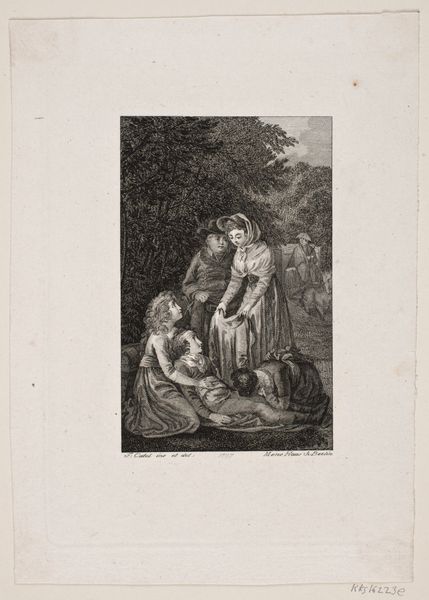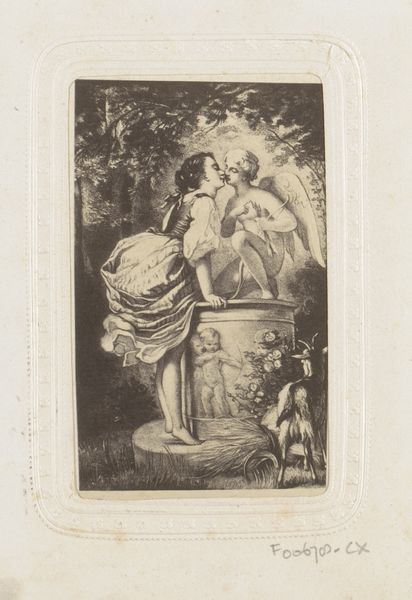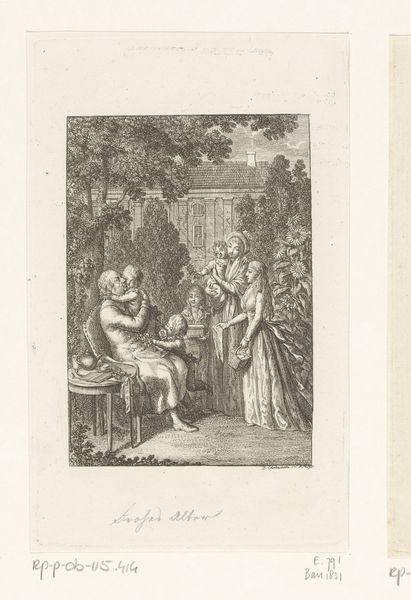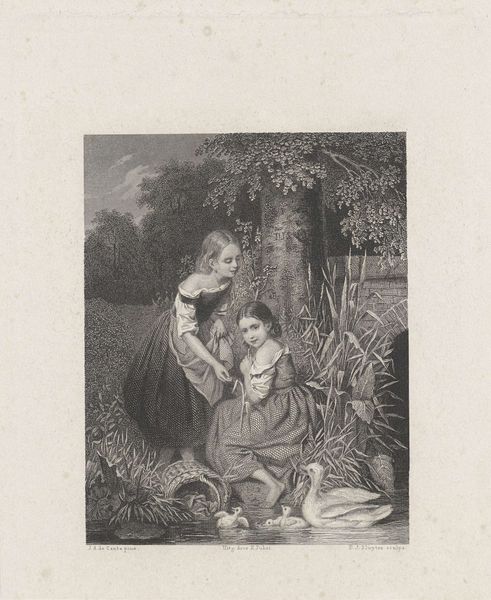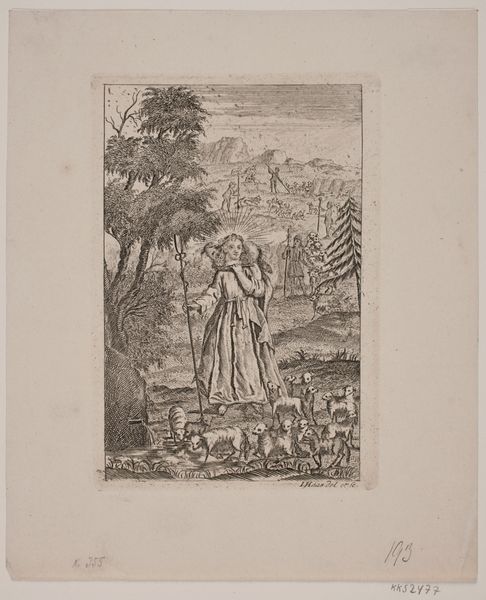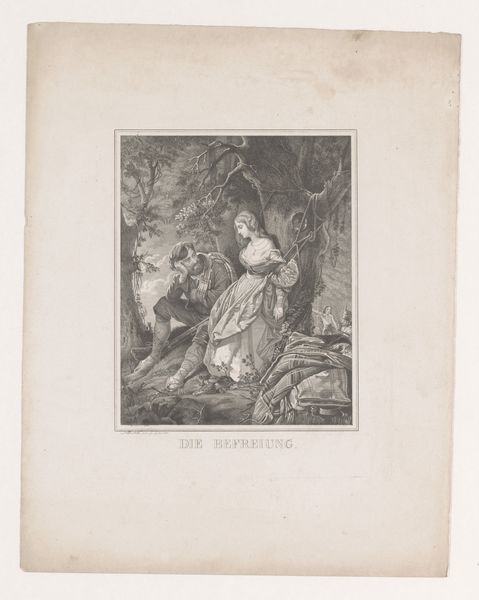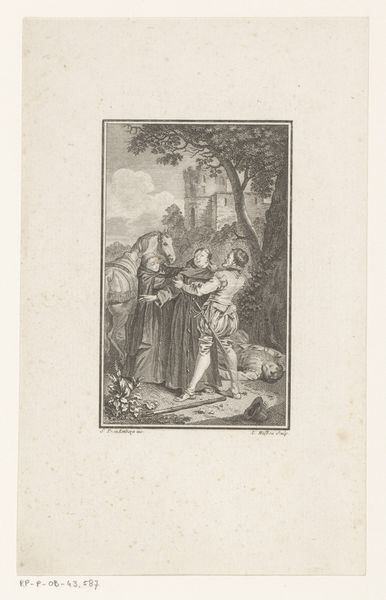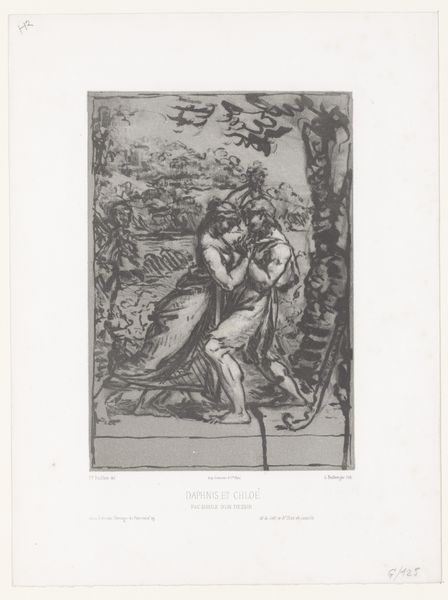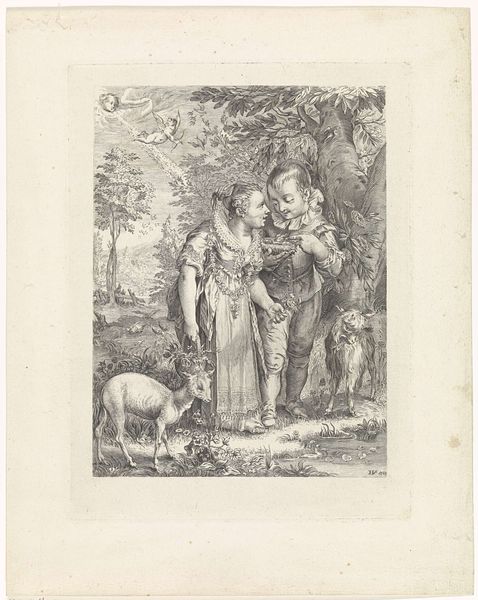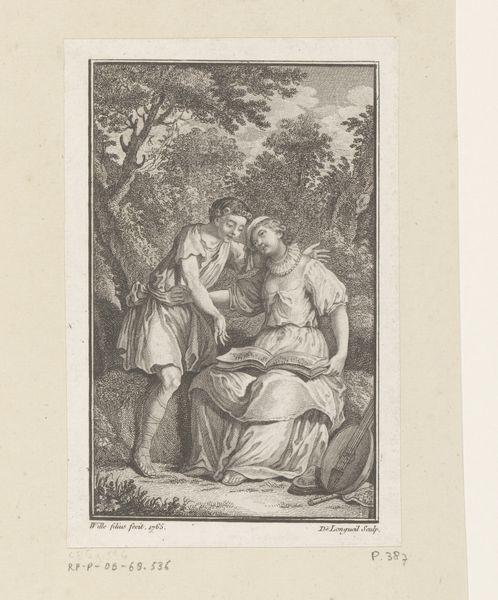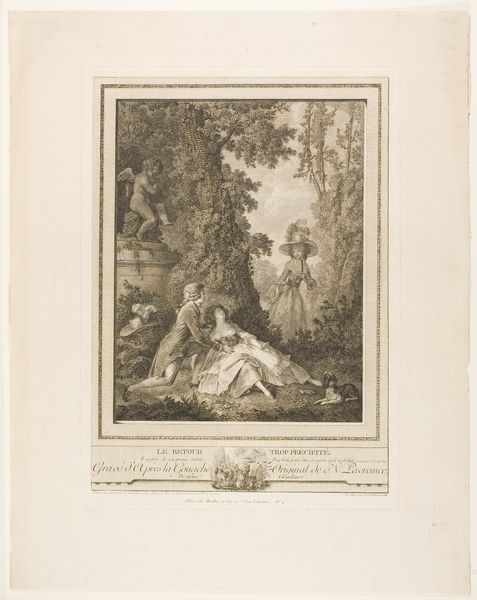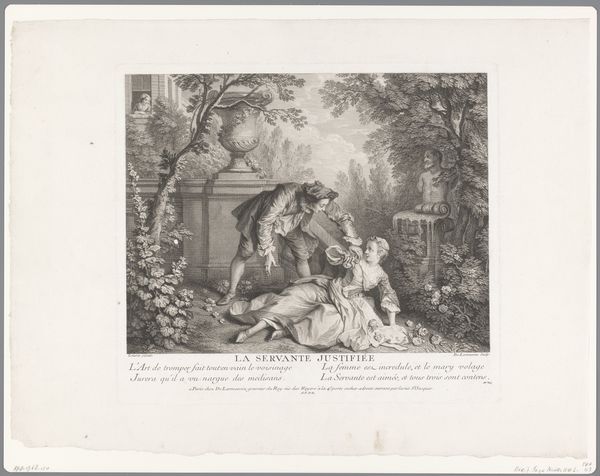
drawing, print, paper, ink, engraving
#
drawing
#
toned paper
#
narrative-art
# print
#
figuration
#
paper
#
ink
#
romanticism
#
genre-painting
#
history-painting
#
engraving
Dimensions: 177 mm (height) x 120 mm (width) (bladmaal)
Curator: This engraving from 1797, created by Meno Haas and held at the SMK in Copenhagen, is titled "Illustration med fire personer om en syg dreng i en skov," or, "Illustration with four people around a sick boy in a forest". Editor: Immediately I’m struck by how this piece, despite its delicate lines, depicts such palpable distress. You see the obvious worry and empathy etched on the faces of those gathered around this child. It’s both touching and, well, quietly heartbreaking. Curator: Exactly. Haas captures that pathos inherent to Romanticism, its focus on raw emotion and intense experience. One of the defining goals of history painting. He uses engraving masterfully, employing the sharp, fine lines to evoke the tender emotional scene in a genre that was usually deployed to celebrate kings and battles. Editor: I think it's fascinating how genre scenes like this one can also be read politically. Looking at this from a contemporary lens, I am forced to wonder who gets empathy and who doesn’t. It subtly addresses disparities; while technically "genre," illness often touches vulnerable segments of society hardest. The scene asks the viewer to reckon with these systemic imbalances, but perhaps with some amount of idealization. Curator: Precisely. It’s intriguing to consider the original audience for prints such as this. While depictions of sickness were becoming increasingly common in art and literature, they might not have always translated into widespread social reform. Disseminating the realities or concerns through widely reproducible artworks made social issues a common point of debate among new audiences. Editor: Yes, the medium itself broadcasts an invitation for widespread awareness and perhaps collective action. It presents an idea to a diverse audience. But while there is power in evoking emotions, there's also the risk of sentimentality overshadowing deeper social analysis if these representations don’t acknowledge those wider dynamics that govern illness. Curator: That balance, I suppose, remains the constant challenge. To represent suffering without exploiting it for pure dramatic effect, that can only become fully achieved through acknowledging the structural causes of their marginalization, so art such as Haas' is both historical artifact, and as you say, a potent opportunity for a different, and better future. Editor: I'd agree; It's fascinating to explore these tensions in earlier art forms and see how they resonate, sometimes troublingly, with contemporary art activism. They remind us to keep questioning who benefits, who suffers, and how we might change the frame.
Comments
No comments
Be the first to comment and join the conversation on the ultimate creative platform.
